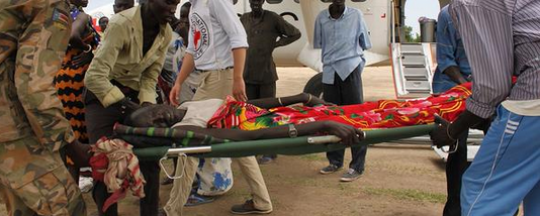This report summarizes recent developments in South Sudan’s continuing civil war and is based on information received by Radio Tamazuj. It is meant to provide a general overview of major events and conflict trends rather than detailing the specifics of conflict events, which are usually difficult to verify.
Conflict situation overview, 11 July 2015:
South Sudan’s capital remained largely quiet this week for Independence Day as civil servants began their weekend early on the orders of the national Labour Ministry. Elsewhere in the country the mood was less festive in particular in Upper Nile State where fighting raged in the Kodok area.
The fighting in this area indicates a setback for Aguelek militia loyal to Johnson Olony, which controlled the area. Attacks on this area may also increase tensions between Shilluk of the west bank and Dinka of the east bank, which is the only area in South Sudan still producing oil and the government’s main stronghold in the state.
The Aguelek and the aligned SPLA-IO rebel group incurred another setback when government troops recaptured the state capital Malakal on Monday. Independent sources reported that the opposition groups withdrew from the city without major fighting, suggesting a lack of force or ammunition to put up resistance to hold the city.
In Unity State there were unconfirmed reports of some clashes, but SPLA-IO has been unable to mount major counter-attacks since the government’s devastating April-May offensive in the state.
Elsewhere, unidentified groups waged guerrilla attacks in several government-held areas. The number of reported attacks points to the determination of opposition forces to carry the war into government-held territories. In particular, nighttime attacks in Aweil West and Aweil Centre counties of Northern Bahr al Ghazal have been blamed on forces of General Dau Aturjong Nyuol, a Dinka general loyal to SPLA-IO.
Although Northern Bahr al Ghazal is firmly in the hand of the Juba government loyal to Salva Kiir, the state has experienced political instability within the ruling party as well as increasing hunger and social unrest. Aturjong, a former gubernatorial candidate hailing from the state, has sought to exploit these factors to attract recruits and cast himself as a liberator.
Closer to Juba, unidentified gunmen waged attacks on commercial vehicles and security personnel on the Yei-Juba road and at the Nimule border crossing point. Armed groups operating in these areas pose risks to the main supply routes between South Sudan and Uganda. In Western Equatoria, meanwhile, state officials including the governor, state information minister and county commissioner have become increasingly insistent in demanding the withdrawal of an SPLA Commando unit from Maridi.
Photo: The Red Cross evacuating residents from Leer who were wounded in fighting in May 2015 (ICRC)




